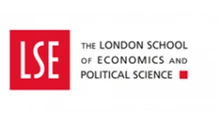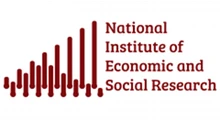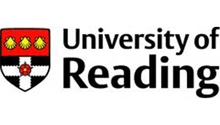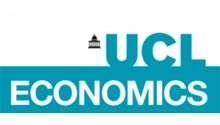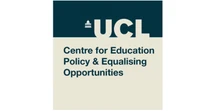Germany’s experience of reunification suggests that economic reintegration can take generations, not years – so leaders should avoid making unrealistic promises. Success requires not just material convergence, but also attention to social cohesion, institutional legitimacy and cultural recognition.
More than three decades since reunification in 1990, large economic disparities persist between East and West Germany. GDP per capita in the east of the country failed to rise substantially in the immediate aftermath of reintegration, and by 2023, it stood at just 66% of the west’s (see Figure 1). Clearly the process of reunification has not been smooth. What can policy-makers in Germany and elsewhere learn from one of the world’s most ambitious efforts at economic integration?
Figure 1: Per capita GDP, East Germany as a share of West Germany
Note: Berlin state is entirely counted as being in the east.
Source: Author’s calculations using data from Destatis.
Germany’s experience shows that economic integration takes generations, not years. In hindsight, unrealistic promises, poor sequencing and under-appreciated structural differences loom large. Massive transfers of wealth from west to east may have improved infrastructure, but insufficient local ownership has hampered economic convergence. Indeed, wealth inequality in Germany widened substantially after reunification (Albers et al, 2022).
There are also political factors. East Germans’ economic insecurities during reunification continue to undermine their satisfaction with democracy today. Research shows that there is a link between early transition experiences and persistent political alienation (Lueders, 2024; Mau et al, 2023; Hager et al, 2022). Economic disparities continue to fuel political polarisation, with eastern states showing significantly higher support for populist parties including the anti-immigrant, anti-establishment ‘Alternative for Germany’ (AfD) party.
Why does economic integration take so long?
Economists at the time of German reunification predicted that regional convergence would follow a ‘2% rule’ (Barro and Sala-i-Martin, 1992). This meant that even under favourable conditions, income gaps should shrink by just 2% annually – halving every 35 years.
But German policy-makers in the early 1990s had a much shorter time horizon in mind. In 1990, chancellor Helmut Kohl promised ‘blossoming landscapes’ – an illusion that later fed disappointment when rapid convergence failed to materialise. While Germany’s case largely confirms the 2% rule, more recent research finds that reunification also illustrates conditional rather than unconditional convergence: economic integration happens only as far as permitted by structural characteristics, such as human capital, institutions and investment rates (Burda, 2019). In hindsight, policy-makers like Kohl could be accused of wishful thinking.
History also plays a part. East and West Germany were not symmetric regions torn apart by chance. Long before their division in 1949, East Germany was more industrial and politically left-leaning, with stronger working-class concentrations and higher support for socialist parties (Becker et al, 2020). Post-war occupation deepened these differences substantially.
During the 20th century, West Germany benefited from Marshall Plan investment from the United States. It also underwent associated institutional reforms that promoted liberalisation and integration into West European markets (DeLong and Eichengreen, 1993). In contrast, East Germany was stripped of industrial capital by the Soviet Union, with both its policy agenda and wider economy subordinated to the Kremlin.
Above all, East Germany – known officially as the German Democratic Republic (GDR) – was held back by persistent structural weaknesses stemming largely from its centrally planned system. Research shows that this systematically inhibited innovation, distorted resource allocation and hampered long-term growth (Steiner, 2010).
What main policy decisions shaped German reunification?
In preparation for reunification in October 1990, East German Marks were converted at a one-to-one exchange rate for Deutsche Marks. But because eastern productivity was only a fraction of the west’s (about a third in 1990), the currency conversion crippled competitiveness overnight.
Labour costs in the east soared beyond western levels. Wage harmonisation (that is, the process of aligning pay structures and employment terms across the two regions) followed quickly, decoupled from productivity. This meant that firms in the east had to pay western wages, but for less productive workers.
This was unsustainable. Indeed, in towns like Bitterfeld (just north of Leipzig), where chemical plants once employed thousands, workers saw their professional identities erased overnight as entire industrial complexes were deemed uncompetitive and shuttered. Many East Germans experienced both economic hardship and a profound loss of status that affected their entire self-conception (Mau, 2024).
There were also issues with corporate ownership. Privatisation through the Treuhandanstalt (the Trust Agency, a government organisation established to privatise East German firms), then the world’s largest corporation, prioritised speed over strategy. While employment targets in privatisation contracts temporarily boosted firm growth and productivity, exit rates soared (Akcigit et al, 2023). Within five years, 70% of industrial jobs vanished. The agency had privatised, liquidated or restructured nearly 12,000 state-owned enterprises by 1994, with a focus on rapid market transition rather than preserving industrial capabilities.
The legacy of this process can still be seen today. By 2020, under 10% of major German firms were headquartered in eastern Germany, despite the fact that the east has around 17% of the population (Statistisches Bundesamt, 2025; Iwasaki and Satogami, 2024). There are similar patterns in the location of administrative leadership, where East Germans occupy only 13.5% of top positions in federal authorities, dropping to just 6.8% at the highest levels of leadership (Bundesregierung, 2023).
Labour market policies, such as early retirement, retraining and public employment, absorbed the initial shock, but they did not create enough lasting jobs. ‘Brain drain’ soon followed: between 1989 and 2006, 1.8 million (mostly young) skilled workers left the east of the country (Hunt, 2006). This continued a pattern of selective migration that had begun before the Berlin Wall was constructed, let alone torn down.
This was all despite wealth being pumped into the east. Transfers totalled €2 trillion over three decades, improving infrastructure and services. But even with this pipeline of funding, East Germany’s overall economic structure shifted towards lower-growth sectors, reinforcing dependency rather than fostering autonomous growth (Joebges et al, 2023). Decades later, some of the eastern states (formerly known as Neue Bundesländer or ‘new federal states’) rely on transfers for over 30% of their budgets (Best and Gebauer, 2020; Ragnitz et al, 2015; Jansen, 2004). Such extreme inter-regional dependency is the antithesis to smooth economic integration.
What does evidence from economic research tell us?
Taking stock, economic convergence in Germany was much slower than expected. Research shows that this was primarily due to persistently low total factor productivity (TFP – a measure of efficiency), rather than differences in human capital or investment (Burda, 2020). On top of this, political shortcuts with respect to currency conversion, privatisation and welfare policies appear to have backfired (Rodríguez-Pose, 2018). The result was a stumbling process that still affects Germany in many ways today.
Significant differences in social capital, business networks and economic behaviour between East and West Germany have persisted decades after reunification, despite identical formal institutions (Fuchs-Schündeln and Hassan, 2016). And rather than fostering the development of local leadership, the massive transfer of elites from west to east after reunification further weakened regional ownership (Kollmorgen et al, 2024). Even so, the framing of ‘West Germans ruling East Germans’ remains somewhat misleading, as reunification was asymmetrical and democratically legitimised (Schröder, 2024).
On the issue of currency conversion, exchange rates need to reflect fundamentals, not sentiment. The one-to-one conversion to Deutsche Marks ignored East Germany’s 70% productivity gap (Burda and Hunt, 2001). This triggered hyper-competitiveness, wiping out hundreds of East German firms. Comparative studies of post-Soviet transitions show that staggered currency adjustments, together with a more gradual transition (for example, Estonia’s pegged kroon), can mitigate collapse (Estrin et al, 2009).
Academic studies have also shone light on some of the weaknesses in Germany’s post-unification corporate ownership strategy. The Treuhand approach to privatisation prioritised external investors (including West Germans), with over 80% of privatised enterprises sold to West German or international investors (Mergele et al, 2025). This dramatically reduced local control and contributed to a sense of economic ‘colonisation’ rather than integration.
On the labour market, research shows that women in East Germany participate more in the official labour force than in the west. But the introduction of West German labour market institutions, which were oriented towards the male breadwinner model, discouraged full-time employment for women, particularly mothers. The loss of comprehensive childcare infrastructure further contributed to lower participation rates, exacerbating gender inequality in ways that persist today.
The continued east-west differences in labour market behaviour and attitudes towards working women reflect not only socialist legacies but also deeper pre-socialist traditions (Wyrwich, 2019). Beyond gender, recent research points to a persistent labour market imbalance in East Germany, where employers face steeper wage increases as they try to grow larger. This makes productive businesses reluctant to expand, further limiting firm productivity and growth (Bachmann et al, 2022).
Sustainable economic development in structurally weaker regions requires more than just financial transfers. It also depends on strengthening local capacities, such as innovation systems, entrepreneurship and resilient industrial structures. Regions with diversified economies, higher shares of skilled labour and innovation activities recover more robustly from economic shocks, while regions heavily reliant on external support often struggle to grow independently (Förtsch et al, 2021; Hundt and Holtermann, 2020; Hundt and Grün, 2022). A dependent position is a potentially vulnerable one.
It is also important to consider political and national identity. Recent historical accounts emphasise that East German experiences and identities deserve recognition as integral parts of Germany’s national narrative, rather than being dismissed as ‘historical ballast’ – a sentiment exemplified by former chancellor Angela Merkel’s objection when her East German biography was described as an ‘unnecessary burden that can just be shrugged off’ (Hoyer, 2023). Some sociologists argue that many East Germans experienced reunification as a form of ‘socio-cultural devaluation’, where their life experiences, professional qualifications and social identities were rendered invalid (Mau, 2024).
More recent evidence shows that the Treuhand experience caused long-lasting political alienation among those affected by mass layoffs, with significantly lower trust and stronger preferences for radical parties persisting over decades (Kellermann, 2024). Indeed, two-thirds of former East Germans still report feeling like second-class citizens in reunified Germany, reflecting more than just an economic lag. For many, reunification brought with it the trauma of abrupt declassification and social dislocation.
How reliable is the evidence?
The German case is unusually well documented (Becker et al, 2020). It benefits from long-term tracking, multiple counterfactuals through comparisons with other post-communist transitions, and detailed microdata (see, for example, Mergele et al, 2025).
But caveats remain. East German official statistics systematically overstated economic performance due to methodological flaws, political incentives and a lack of meaningful prices. This severely complicates any baseline comparisons (Sleifer, 2006). The GDR’s statistical bureaucracy also over-reported industrial output and productivity to try to demonstrate the superiority of socialism (Sleifer, 2006). After reunification, economists discovered that actual productivity levels were far lower than official GDR statistics had suggested, complicating before-and-after comparisons (Giersch et al, 1994).
Regions were also not randomly assigned. The division into east and west was not an experimental design where similar regions were randomly allocated to different treatments: east and west differed before 1945 in class structure, employment and political culture (Becker et al, 2020; Steiner, 2013; Wolf, 2009).
Indeed, German economic integration was incomplete even before the Second World War, with high internal trade costs and distinct economic structures between regions. What looks like the ‘communist legacy’ often reflects differences that preceded Soviet rule to a significant extent. Blaming everything on central planning misses part of the historical picture.
What else do we need to know?
The body of research about the effects of Germany’s division and unification continues to grow. For example, even today regions that experienced higher surveillance intensity by the GDR’s secret police (the Stasi) show lower trust, civic engagement and economic dynamism three decades later. This suggests that institutional legacies have deeper psychological effects than first recognised (Lichter et al, 2021).
Similarly, it has been suggested that successful economic integration requires not just material convergence, but also symbolic recognition and participatory governance – dimensions sometimes overlooked in technocratic approaches to reunification (Oschmann, 2024). For many people, feeling unified socially may be just as important as being unified administratively.
Culture and the media also play a part. Various studies demonstrate how differential exposure to western television in the GDR created persistent differences in consumption patterns, democratic attitudes and economic expectations – differences that continue to influence regional development trajectories decades later (Henninghausen, 2015; Burstyn and Cantoni, 2016).
Several open questions remain. To name just a few:
- How can policy-makers balance the need for structural transformation with preserving social cohesion during periods of rapid economic change?
- Could a gradual path to currency and wage convergence really have softened the economic shock?
- How can symbolic status and perceived recognition be addressed during systemic transitions?
- How persistent are pre-war regional structures across regime changes?
- What role does the intergenerational transmission of economic trauma play in shaping long-term regional development?
- Would stronger local institutions have achieved better outcomes than massive fiscal transfers alone?
Broader lessons for economic integration
Together with these open questions, there are also several broad lessons that policy-makers and researchers can take from Germany’s experience:
Expectations must be realistic. Convergence between regions, even those with many common characteristics and formally equalised institutions, takes generations, not years.
Institutional transfers must balance outside expertise with local legitimacy. Simply transplanting institutions from advanced regions to developing regions ignores crucial context and undermines ownership. Strategies like the European Union’s (EU) twinning programme show that peer-to-peer cooperation can strengthen local ownership and build administrative capacities more sustainably (European Commission 2024). Concrete measures to address ‘recognition deficits’ might have included preserving valuable East German institutions like the comprehensive childcare system or workplace-based social services (Kowalczuk, 2019).
Policies on exchange rates and wages must reflect economic fundamentals. Political symbolism in economic policy often leads to unintended distortions. This idea is mirrored in the euro area’s convergence criteria, which acknowledge that sustained multi-year stability across fiscal, inflationary and exchange rate indicators is necessary before integration can succeed (European Central Bank, 2025).
Privatisation should balance efficiency with equity. Rapid sell-offs to external investors can hollow out regional economies and create political alienation. Alternative privatisation approaches used in Poland, such as employee ownership plans or voucher-based systems that distributed ownership to citizens, might have preserved more local economic control in post-reunification eastern Germany (Brada, 1996). A more ‘regionally-adaptive’ privatisation framework could have enabled stronger local economic performance and reduced political backlash.
People want meaningful work, not welfare. Labour market policies must foster sustainable employment, not only delay unemployment. The system should actively support transitions into durable and good-quality employment opportunities (Causa et al, 2021). Without targeted investment in local capacity-building, transfer-dependent regions risk remaining vulnerable to future disruptions, rather than achieving sustainable resilience.
Transfers should build capacity, not dependence. Conditional aid linked to development outcomes produces better results than unconditional budget support.
Infrastructure investment should match demographic realities. Building for yesterday’s population patterns wastes resources and creates maintenance burdens.
These lessons have direct relevance for regional development across the EU. Germany’s experience also provides insights for post-conflict reconstruction, as well as for potential future reunification scenarios such as Korea.
The German experience demonstrates that successful economic integration requires not just material convergence, but also careful attention to social cohesion, institutional legitimacy and cultural recognition. By acknowledging both the economic and socio-cultural dimensions of integration, policy-makers can design more effective strategies that foster sustainable development while respecting regional identities and historical experiences. The true measure of integration is not merely statistical convergence, but the creation of inclusive societies where citizens feel equally valued regardless of their origins.
Where can I find out more?
- Federal Ministry for Economic Affairs and Climate Action (Germany): publications on economic development in eastern Germany and annual reports on German unity.
- Federal Agency for Civic Education (Bundeszentrale für politische Bildung): numerous free educational resources on German reunification in both German and English.
- Deutsche Welle (DW), Germany’s international broadcaster: articles, documentaries and multimedia content on German history and reunification
Who are experts on this question?
- Steffen Mau – Humboldt University Berlin
- Sascha Becker – University of Warwick
- Wolf-Fabian Hungerland – Federal Ministry of Economic Affairs, Germany

















